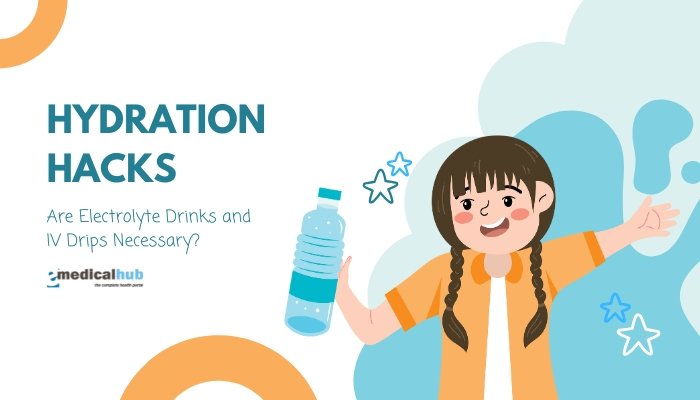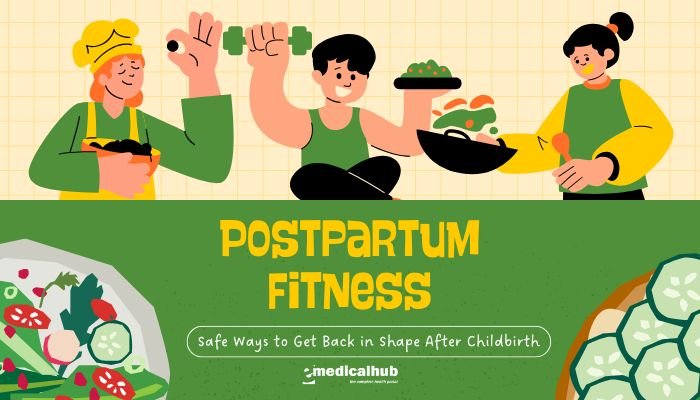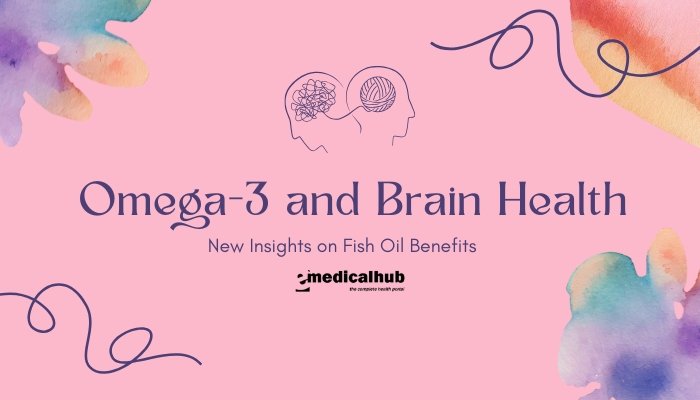Introduction
Staying hydrated is essential for maintaining energy, mental clarity, and overall health. Water is often touted as the go-to solution, but in recent years, electrolyte drinks and IV hydration drips have surged in popularity.
From bright sports beverage commercials to “IV bar” clinics offering a quick hydration fix, many wonder if these strategies are truly necessary. Are traditional water and a balanced diet enough, or are there scenarios where electrolyte solutions or intravenous fluids genuinely provide an advantage?
This article aims to clarify the science behind hydration, outline when specialized methods (like sports drinks or IV drips) might be useful, and help you decide the best approach for everyday life and special circumstances.
While electrolytes and IV therapy can be beneficial under specific conditions, overreliance or misuse can be wasteful or potentially harmful. By understanding your individual activity levels, health status, and real hydration needs, you can make informed choices about how to keep your body properly hydrated.
Disclaimer: This information is for educational use and does not replace individualized medical advice. If you have chronic health conditions or suspect severe dehydration, consult a qualified healthcare professional for personalized guidance.
Why Hydration Matters
The Body’s Dependence on Fluids
The human body is about 60% water, used in every critical function:
- Regulating Body Temperature: Sweating helps dissipate heat, preventing dangerous overheating.
- Transporting Nutrients: Blood, largely water-based, carries oxygen and nutrients to cells.
- Removing Waste: Kidneys rely on adequate water to filter and excrete toxins.
- Cellular and Tissue Function: Water is the solvent for biochemical reactions in your cells.
Dehydration’s Impact
When you lose more fluid than you take in—through sweat, urination, or breathing—you enter a dehydrated state. Even mild dehydration (2% body weight loss in fluids) can result in:
- Fatigue
- Headaches
- Reduced Cognitive Performance
- Irritability
- Impaired Physical Endurance
For moderate to severe dehydration (from illness or intense exercise), symptoms can escalate to dizziness, confusion, or dangerously low blood pressure.
Electrolytes and Their Role
What Are Electrolytes?
Electrolytes are minerals that carry an electrical charge, crucial for muscle function, nerve impulses, and fluid balance. These include:
- Sodium: Maintains extracellular fluid balance, helps with nerve signaling.
- Potassium: Vital for heartbeat regulation, nerve conduction.
- Chloride: Works with sodium to maintain fluid balance.
- Magnesium: Supports muscle relaxation, enzymatic reactions.
- Calcium: Beyond bone health, also essential for muscle and nerve actions.
How We Lose and Replenish Electrolytes
- Sweat: Contains sodium and smaller amounts of potassium. Heavy sweating can cause notable sodium depletion.
- Urination: Normal excretion, but certain conditions (like diuretic use) can accelerate losses.
- Diet: Typically, a balanced diet with fruits, vegetables, whole grains, and some salt can meet daily electrolyte needs.
When fluid losses become significant—through prolonged exercise, extreme heat, or GI illness—electrolyte depletion might lead to cramping, fatigue, or confusion. Replacing electrolytes can expedite recovery of normal muscle and nerve function.
Commercial Electrolyte Drinks
Common Types
- Sports Drinks: E.g., Gatorade, Powerade – formulated to rehydrate and restore electrolytes for athletes. Typically contain water, sugars, sodium, potassium, plus flavors and colorants.
- Enhanced Waters: Lower sugar or zero-sugar drinks with added electrolytes.
- Oral Rehydration Solutions (ORS): The WHO or medically approved formula for addressing dehydration from diarrhea or severe fluid loss. Usually more precise in electrolyte ratios.
Pros and Cons
Pros:
- Useful for endurance athletes who lose significant sodium/potassium via sweat.
- Convenient for people with extended or intense workouts, or if recovering from GI issues.
Cons:
- Many sports drinks are high in sugar, adding unnecessary calories if you’re not exercising heavily.
- Not all drinks have well-balanced electrolyte profiles; some have excessive sugar or artificial additives.
- Overconsumption of sodium-laden beverages can pose risks for those with hypertension or kidney problems.
When They Make Sense
- Long-Duration Exercise (>60 minutes) or repeated intense workouts in hot conditions.
- Acute Dehydration from diarrhea or vomiting, especially if recommended by a healthcare professional.
- Outdoor/High-Temperature Activities: If sweat rate is high, an electrolyte beverage can help maintain performance.
For average daily tasks or mild exercise, plain water combined with a nutrient-rich diet is often sufficient.
IV Drips and the “IV Lounge” Trend
Intravenous Hydration Explained
An IV drip delivers fluids—and potentially vitamins, electrolytes, or minerals—directly into the bloodstream. Traditionally used in clinical settings for severely dehydrated patients, it bypasses the digestive system, ensuring quick absorption.
The Emergence of “IV Drip Bars” or “IV Therapy”
Some wellness spas or drip bars offer “vitamin infusions” claiming to rehydrate, cure hangovers, enhance athletic performance, or even promote anti-aging. They might incorporate high-dose vitamin C, B vitamins, or amino acids. While convenience is a selling point, these services can be costly and are not always backed by robust scientific evidence.
Who Really Needs IV Hydration?
- Medical Necessity: Patients with severe dehydration (due to vomiting, diarrhea, or inability to keep fluids down).
- Emergencies: Heat stroke, shock, or severe acute illness.
- Clinical Settings: People with certain malabsorption conditions or post-surgical fluid/ nutrient requirements.
For a healthy individual experiencing mild dehydration or fatigue, it’s rarely needed. Oral hydration can be very effective, cheaper, and less invasive.
Risks and Drawbacks
- Infection Risk: IV lines carry a small but real risk of infection if not done in sterile conditions.
- Overloading: Excess fluids or electrolytes (like sodium, potassium) can cause complications in sensitive individuals.
- Cost and Overpromised Benefits: Many “IV cocktails” marketed for energy or detox might yield minimal proven benefit for an otherwise healthy body.
Everyday Hydration: Water vs. Enhanced Options
Plain Water as the Gold Standard
For most daily routines—like sitting at a desk, moderate walking, or short workouts—plain water is typically adequate. It’s calorie-free, readily available, and meets fundamental fluid requirements. The widely cited “8 glasses a day” is a rough guideline; actual needs vary based on climate, activity, and body size.
Tapping into Natural Alternatives
If you’re craving more flavor or mild electrolytes, consider:
- Coconut Water: Naturally low in sugar, moderate in potassium, a mild rehydration beverage.
- Herbal Teas: Provided they’re unsweetened, they can add variety.
- Infused Water: Soaking fruit slices (lemon, cucumber) or herbs in water imparts a refreshing taste.
When to Add Electrolyte Replacements?
You may need specialized drinks if:
- Heavy Sweating: Engaged in high-intensity or prolonged exercise (e.g., over 60–90 mins).
- Extreme Heat: Working or training outdoors in hot/humid weather for extended periods.
- Recovering from Illness: If recommended by a physician (i.e., diarrhea, severe vomiting, or post-surgery fluid replenishment).
Key Tips for Optimal Daily Hydration
- Monitor Thirst: Thirst is a decent indicator, though not always reliable (especially in older adults or intense athletic scenarios).
- Check Urine Color: Pale straw color typically signifies adequate hydration; dark urine might indicate you need more fluids.
- Space Out Intake: Drinking smaller amounts regularly, rather than chugging large volumes at once, helps maintain balanced hydration.
- Balance Diet: Adequate salt intake for normal function (unless medically restricted), plus enough fruits/veg for potassium and other minerals.
- Adjust for Activity/Climate: Up fluid intake if it’s scorching or if you’re vigorously active.
Summary of Potential Benefits and Drawbacks
Electrolyte Drinks
- Pros: Replenish lost minerals, beneficial for intense workouts or heat exposure, convenience for some.
- Cons: Many have high sugar, can be unnecessary for routine daily living, potential cost factor.
IV Drips
- Pros: Rapid rehydration for severe cases, medical conditions, or acute dehydration emergencies.
- Cons: Usually not needed for mild dehydration, expensive, minor infection risk, questionable for “wellness” use in healthy individuals.
Plain Water
- Pros: Cheap, effective, no additives.
- Cons: Doesn’t supply extra electrolytes, but that’s typically not an issue for normal everyday scenarios if diet is balanced.
How to Decide What’s Right for You
- Assess Your Lifestyle: Are you a recreational walker or a marathon runner? Different needs for daily vs. strenuous or prolonged exercise.
- Check Symptoms: Frequent fatigue, persistent dryness in mouth, or muscle cramps might indicate suboptimal hydration or electrolyte imbalance.
- Budget and Necessity: If you rarely do intense workouts, sports drinks might just add sugar. Save them for when you’re truly sweating hard or if your doctor advises them.
- Medical Advice: With conditions like kidney disease, heart ailments, or diabetes, specialized fluid plans or salt restrictions exist—professional input is crucial.
Realistic Hydration Hacks
Infused Waters for Taste
If plain water bores you, infuse with cucumber, lemon, mint leaves, or frozen berries. This can encourage consistent sipping throughout the day, with minimal sugar.
Homemade Electrolyte Drinks
Combine water, a squeeze of citrus (lemon/lime for vitamin C), a pinch of salt, and a bit of honey or natural sweetener. This helps in moderate rehydration without the sugar load of store-bought sports drinks.
Foods Rich in Electrolytes
- Bananas: High in potassium.
- Spinach / Kale: Abundant in magnesium, potassium, etc.
- Avocados: Loaded with potassium, healthy fats.
- Yogurt (for those who consume dairy): Contains calcium, potassium, sodium in moderate amounts.
Mindful Drinking
- Have Water Accessible: A bottle on your desk or bag so thirst doesn’t escalate.
- Listen to Your Body: If you sense dryness, mild headache, or fatigue, it might be a subtle dehydration sign.
Frequently Asked Questions (FAQ)
Is there such a thing as overhydration?
Yes. Excessive water intake, especially absent electrolytes, can lead to hyponatremia (dangerously low sodium levels). This is rare but can happen in endurance sports or if one drinks extremely high volumes rapidly.
How can I tell if I really need sports drinks vs. water after exercise?
If you’ve exercised strenuously for over an hour or in hot weather with significant sweat, a sports drink may help. For casual workouts under an hour, water and a balanced meal typically suffice.
Are all electrolyte drinks the same?
They differ in sugar levels, sodium content, additional vitamins, or marketing claims. Check nutritional labels carefully, matching your exercise intensity or health situation.
Is plain sparkling water as hydrating as still water?
Generally yes, though carbonation might cause mild fullness or indigestion in some people. It still counts toward fluid intake.
What about using fancy mineral waters for daily hydration?
Mineral water can supply trace minerals, but they’re not essential if you follow a balanced diet. It’s mostly a taste preference or to add variety.
Conclusion
Staying well-hydrated is a cornerstone of overall health, yet the proliferation of electrolyte drinks and IV drip services can be overwhelming or confusing. While these solutions serve a legitimate role—particularly for endurance athletes, people recovering from illness, or those with specific medical needs—most healthy adults can meet daily hydration requirements effectively with plain water and a nutrient-rich diet. In many cases, pricey sports beverages or intravenous treatments are either unnecessary or only marginally beneficial.
Nevertheless, if you engage in intense, prolonged exercises, or if you’re combating severe fluid loss (e.g., from vomiting or diarrhea), an electrolyte boost can speed recovery. Similarly, IV drips can be valuable in clinical or emergency contexts, but for average daily fatigue or mild dehydration, they’re often an excessive (and expensive) measure. Ultimately, a balanced approach—mindful water intake, an array of whole foods providing natural electrolytes, and customized modifications for your lifestyle—is the simplest path to robust hydration and well-being. Listen to your body and consult professionals if you’re unsure about the best hydration strategy for your unique situation.
References
- Sawka MN, Cheuvront SN, Carter R 3rd. Human water needs. Nutr Rev. 2005;63(6 Pt 2):S30-9.
- Popkin BM, D’Anci KE, Rosenberg IH. Water, hydration, and health. Nutr Rev. 2010;68(8):439-58.
- Maughan RJ, Watson P, Cordain L. Supplementation of water, electrolytes, or none for hydration; critical review. Am J Clin Nutr. 2018;108(5):1045-1052.
- Institute of Medicine (US) Panel on Dietary Reference Intakes for Electrolytes and Water. Dietary Reference Intakes for Water, Potassium, Sodium, Chloride, and Sulfate. National Academies Press; 2005.
- Shirreffs SM, Sawka MN, Stone M. Water and electrolyte needs for football training and match-play. J Sports Sci. 2006;24(7):699-707.
- Casa DJ, Stearns RL, Lopez RM, et al. Influence of hydration on performance and safety in sports. Curr Sports Med Rep. 2010;9(4):202-8.
- Thomas DT, Erdman KA, Burke LM. Position of the Academy of Nutrition and Dietetics, Dietitians of Canada, and the ACSM: Nutrition and athletic performance. J Acad Nutr Diet. 2016;116(3):501-28.
- Phillips SM, Turner AP. In vitro and in vivo systems evaluating safety, efficacy, or validity of intravenous therapy in healthy individuals. Am J Clin Exp Urol. 2021;9:239-245.
- Heard K, Burwell S, Borg L, et al. Intravenous fluids for ‘wellness’? A cross-sectional survey exploring usage, safety, and perceptions. Int J Environ Res Public Health. 2020;17(12):4357.
- Armstrong LE. Assessing hydration status: the elusive gold standard. J Am Coll Nutr. 2007;26(5 Suppl):575S-584S.
- Perrier E, Vergne S, Klein A, et al. Hydration concepts and recommendations. Review and critical analysis. Nutr Today. 2017;52(1 Suppl):S3-S16.
- Coyle EF, Montain SJ. Carbohydrate and fluid ingestion during exercise: are there trade-offs? Med Sci Sports Exerc. 1992;24(6):671-8.






